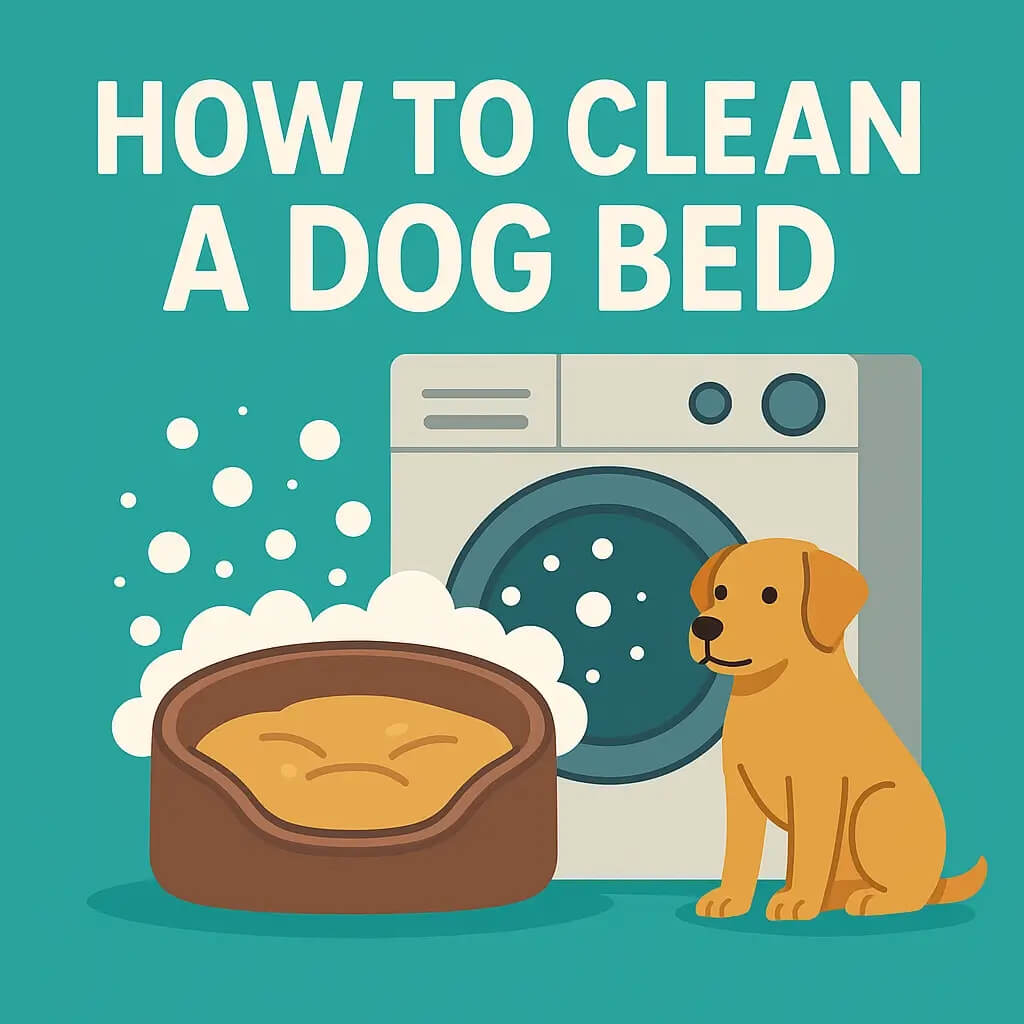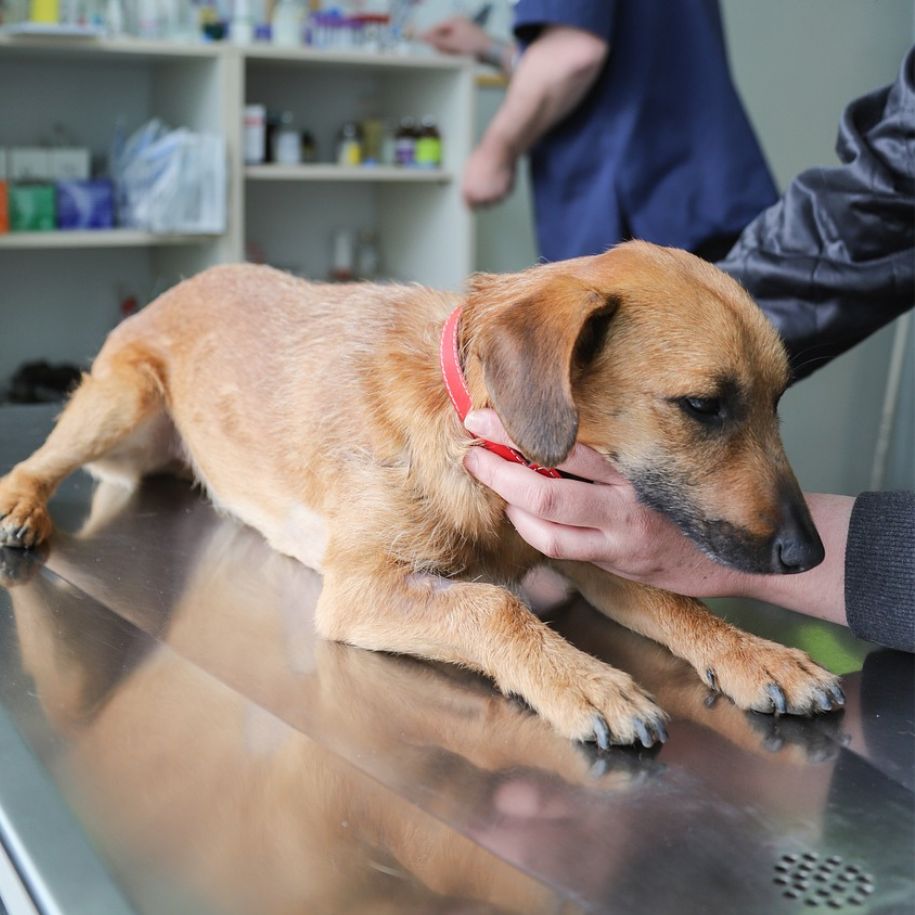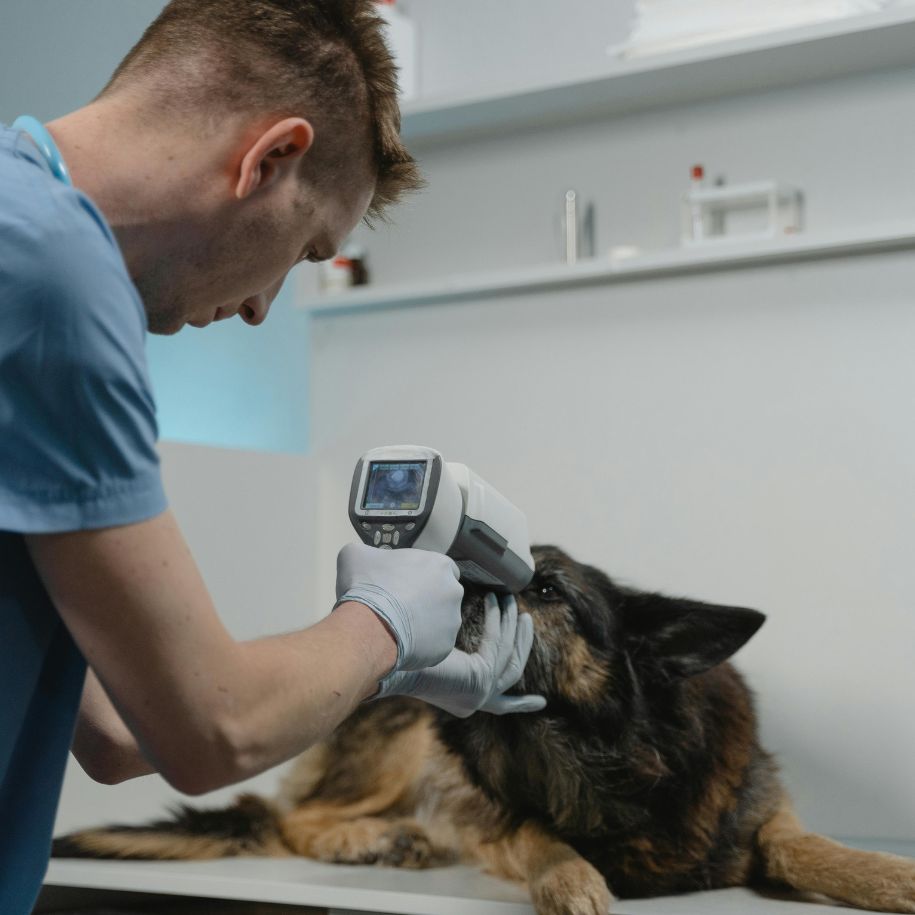If you're a pet parent who enjoys outdoor adventures with your dog, you’ve probably come across those tiny, intensely orange insects known as chiggers. These trombiculid mites, also called harvest mites or berry bugs, can cause significant discomfort for your dog. Although chiggers on dogs are a common problem, the good news is that there are safe and effective ways to treat chiggers and prevent future infestations. In this guide, we'll walk you through everything you need to know about chigger bites and how to help your dog recover from the intense itching caused by these itch mites.
Understanding Chiggers on Dogs: What Pet Parents Need to Know
Chiggers on dogs, also known as harvest mites, red bugs, berry bugs, or scrub itch mites, are tiny, characteristically orange insects in their larval stage. These pests primarily feed by biting larvae injecting saliva into the dog's skin to digest skin cells, causing intense itching and discomfort. They don’t burrow deep, but their saliva severely irritates the skin's surface, resulting in raised red bumps and varying resulting skin lesions.
Commonly found in thick vegetation such as tall grass, bushes, and wooded areas, chiggers become especially active during early fall, according to veterinary experts. The American Association of Veterinary Parasitologists (AAVP) highlights that these tiny pests often swarm in large numbers, causing sudden onset of symptoms on your dog's body after outdoor activities. Dogs symptoms include severe itching, redness, hair loss, and possible secondary infections due to scratching and self-inflicted wounds.
Dr. Susan E. Little, from Oklahoma State University's Center for Veterinary Health Sciences, emphasizes their near-invisibility, describing them as “so tiny you can just barely see them.” This makes prevention challenging for active pet parents who frequently explore outdoor environments with their dogs.

Signs Your Dog May Have Chiggers
Recognizing dogs symptoms of a chigger attack can help you take action quickly. Look out for the following signs:
-
Intense itching: Your dog may be scratching or biting at specific areas, especially on their legs, belly, or paws.
-
Raised red bumps: These intensely orange spots can appear on the skin where the larvae have attached themselves.
-
Hair loss: Persistent scratching can lead to hair loss around the affected area.
-
Skin irritation: You may notice redness, swelling, or other signs of inflammation.
-
Sudden onset of symptoms: The itching and discomfort often appear shortly after your dog has spent time in thick vegetation or wooded areas.
How to Prevent Chiggers on Dogs
Prevention is always better than cure. Here are some effective ways to prevent chiggers from making your dog their next meal:
-
Limit exposure: Avoid walking your dog in areas with tall grass, wooded areas, or bushes, especially during early fall, when chiggers are most active.
-
Protective clothing: If you're in an area where chiggers live, consider wearing long pants to minimize your exposure and prevent bringing the tiny pests into your home.
-
Regular grooming habits: Brush your dog’s coat regularly to remove any mites or eggs that may have attached to their fur. Bathing your dog after outdoor activities can help remove any mites that may be lurking on their coat.
-
Use dog-safe repellents: There are various sprays and products designed to repel chiggers. Consult your veterinarian for recommendations on safe and effective treatment options.

How to Treat Chiggers on Dogs
If your dog has already been exposed to chiggers, don't worry—there are several steps you can take to provide relief and help your dog heal:
1. Give Your Dog a Warm Bath
A warm bath is an essential first step in treating chigger bites. Use cold water to rinse off any mites on your dog’s skin, then bathe your dog with hot water and a mild, dog-safe shampoo to cleanse their skin. Adding epsom salts to the bath can help reduce inflammation and soothe irritated skin.
2. Apply a Cool Compress
A wrapped ice pack or a soft cloth soaked in cold water can provide relief from itchy discomfort. Applying a cool compress to the affected areas will help reduce swelling and numb the itch.
3. Soothing Ointments and Creams
Topical treatments like calamine lotion or green tea compresses can provide relief from itchy bites. Green tea has anti-inflammatory properties that can help soothe the skin, while calamine lotion can dry out and relieve the irritation caused by the mites.
4. Anti-Inflammatory Medications
If your dog is suffering from severe itching or inflammation, ask your veterinarian about anti-inflammatory medications like corticosteroids or antihistamines to provide relief. Your vet may also recommend a superficial skin scraping to rule out other skin conditions or infections.
5. Natural Remedies for Chigger Bites
For mild cases, natural remedies like ground oatmeal can be used to soothe itchy bites. Make a paste with warm water and apply it directly to the affected areas to help relieve itchy discomfort.
6. Keep the Affected Areas Clean
Regularly clean the dog's body and keep the skin free of dirt, debris, and bacteria. This is important to prevent any secondary infection from developing. Ensure that your dog’s wounds are not scratched open, as this can lead to self-inflicted wounds.
7. Consult Your Veterinarian
If your dog’s symptoms persist or worsen, it’s essential to consult your vet. In some cases, chiggers on dogs can lead to severe itching and resulting skin lesions that may require additional treatments, including feeding tubes or prescription treatments.
When to Seek Veterinary Help
In most cases, home remedies and proper care will resolve the problem. However, there are instances when secondary infection or severe itching requires veterinary intervention. If you notice:
-
Open wounds or self-inflicted wounds that aren't healing.
-
Persistent redness or swelling after 2–3 days of home treatment.
-
Any signs of infection, like pus, excessive pain, or fever.
Then it’s time to visit the vet for further treatment. Your vet may recommend more targeted therapies or prescribe anti-inflammatory medications to ease the discomfort.
Conclusion
While chiggers on dogs can cause intense itching and irritation, they’re treatable with the right care and attention. By following the tips outlined in this guide, you can help protect your dog from chigger bites and keep them comfortable when they are affected. Remember, prevention is key, but if a chigger attack does occur, quick action with proper treatment will provide relief and help your dog recover quickly.
With regular grooming, safe outdoor practices, and the right treatments, you can ensure your dog stays happy, healthy, and free from pesky mites. If you're unsure about the right approach, don't hesitate to contact your veterinarian for the best course of action.












